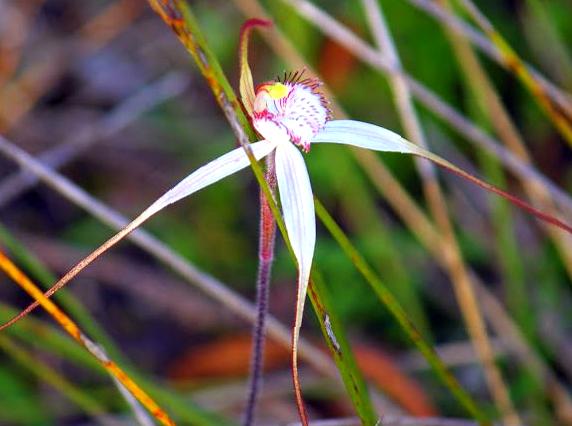If you’re an avid nature lover, searching for native orchids in the forest can be a delightful and enchanting experience. Native orchids offer a glimpse into the delicate and unique ecosystems of various parks and forests. These beautiful plants not only enhance the biodiversity of their habitats but also play a crucial role in sustaining local wildlife. In this article, we’ll explore where to find native orchids, what to look for during your search, and the best practices to ensure you appreciate these treasures without damaging their environment.

Why Native Orchids Matter
Native orchids are vital components of many forest ecosystems. They are often found in nutrient-rich soils and can thrive in various environments, from moist woodland areas to dry, rocky outcrops. Understanding their ecological role is important because these orchids support pollinator species, including bees and butterflies, which are essential for maintaining the health of our ecosystems. Additionally, orchids are indicators of environmental quality. A thriving population of native orchids often signifies a balanced and healthy environment. Unfortunately, many native orchid species face threats from habitat loss, climate change, and invasive species, making conservation efforts even more critical.

Best Places to Search for Native Orchids
Finding native orchids requires more than just luck; it’s about knowing where to look. Parks and nature reserves with rich biodiversity often harbor a variety of orchid species. Here are some ideal locations to consider:
- Woodland Areas: These are typically rich in organic matter and provide shelter and humidity that orchids love.
- Wetlands: Many native orchids thrive in these moist conditions, making them ideal hunting grounds.
- Rocky Slopes: Certain orchids prefer well-drained soils found on hillsides or rocky terrains, offering unique opportunities for discovery.
- Established Nature Reserves: Such sites often prioritize conservation and are fruitful areas for native plant lovers.
- Botanical Gardens: Although not ‘wild’, many gardens have sections dedicated to native plants, including orchids.

How to Identify Native Orchids
Identifying native orchids can be challenging due to the vast variety of species. However, there are some key characteristics to help you distinguish them:
- Flower Shape: Native orchids often have unique flower shapes that can vary significantly across species. Take the time to observe the petals’ arrangements and shapes.
- Leaf Patterns: Many orchids have distinct foliage, which ranges from broad to strap-like leaves. Observing these patterns can aid in identification.
- Growth Habitat: Note the environment in which you find the orchids; specific species have adapted to particular habitats.
- Blooming Season: Different orchids have varying blooming times throughout the year, affecting their visibility depending on the season.
Best Practices for Orchid Watching
When searching for native orchids in the park, it is essential to adopt best practices to ensure their protection. Here are some key strategies to follow:
First, carry out your exploration quietly and with respect for the environment. Avoid trampling on other vegetation, as this can disturb the delicate balance of the ecosystem. Second, take photographs rather than picking the orchids, as this preserves the plant for others to enjoy while still allowing you to cherish the memories. Third, educate yourself about the specific orchid species in your area, including their conservation status. This knowledge can significantly enhance your appreciation and guide responsible behavior. Lastly, consider visiting during early morning or late afternoon – this is when many orchids are fully open and more easily spotted. Observing these flowering beauties at their prime can provide an unforgettable experience.

Conclusion
Searching for native orchids in the forest or park is a rewarding activity that connects you with nature and fosters appreciation for biodiversity. By understanding the importance of these remarkable plants, knowing where to find them, and applying best practices during your search, you can enjoy this pursuit while helping to conserve these delicate species. As you embark on your adventure, remain patient, and keep your eyes peeled for these hidden treasures of the wild!
FAQs
1. What is the best time of year to look for native orchids?
The best time to search for native orchids typically varies by region, but many species bloom in the spring and early summer. It’s advisable to check local resources for specific blooming seasons in your area.
2. Are all native orchids protected?
While many native orchid species are protected, the extent of protection can vary by state or country. Always check local regulations regarding native plant conservation and legality before visiting natural areas.
3. Can I cultivate native orchids in my garden?
Cultivating native orchids in your garden is possible, but it requires understanding their specific needs. Consider factors such as light, soil type, moisture, and local climate to create a suitable environment for them.
4. How can I contribute to the conservation of native orchids?
You can contribute to their conservation by participating in local conservation efforts, educating others about the importance of native plants, and following responsible practices when enjoying natural habitats.
5. Are there any specific tools I should use when searching for orchids?
A good pair of binoculars, a camera for photography, a field guide to identify species, and a notebook for jotting down observations can enhance your orchid-searching experience.